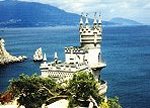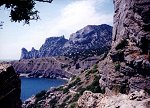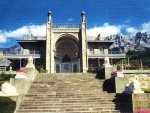|
[ Black Sea ] [ Climate ] [ Caves ] [ Archaeology ] [ Religion ] [ History ] [ Tourist Info ] [ Palaces ] [ Tourists' Comments ] [ Crimea ] [ Wines ] [ Meet our Team ] [ Services and Prices ] [ Mountains ] [ Hiking Trails ]
PALACES and gardens OF THE CRIMEA
 Alupka palace and
gardens Alupka palace and
gardens
One of the most entertaining is the gorgeous Vorontsov Palace,
where incongruous architectural styles meet: English Romantic, Scottish,
Arabian. Somehow, these styles get along and the palace echoes the capricious
shapes of its mountain backdrop. The most exotic palace-gardens complex on the entire coast is
located in Alupka, about 16 km west of Yalta.
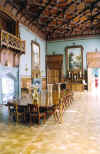
Designed and built between 1828 and 1846 by English architects for the English-educated Count Mikhail Vorontsov, the immensely rich regional governor, the palace is a combination of Scottish castle on its landlord side, and Arabic fantasy facing the sea.
 Vorontsov brought servants from his estates all over Russia to create the palace and the large gardens below and above it on the hillside. Vorontsov brought servants from his estates all over Russia to create the palace and the large gardens below and above it on the hillside.
Six gorgeous Italian marble lions flank the staircase outside the palace's seaward front. Highlights of the interior include an 1860 Becker piano, a beautiful sun room, and a main dining room with impressive woodwork and a balcony for musicians.
The gardens is a masterpiece of landscape architecture. It includes a dense artificial forest, filled with enormous boulders that during the ages have fallen from the cliffs in odd shapes and lodged in positions which the landscape artist has utilized in an ingenious and artistic manner. There are said to be 1,140,000 plants. Every tree was planted by hand and 127 varieties are represented.
livadia
palace and gardens
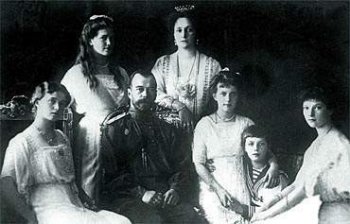 
It was Livadia, three km west of Yalta, that put the Yalta area on the maps of both Russia and the world.
First in 1860 when the imperial family started building here, then in February 1945 when
Josef Stalin, Franklin D. Roosevelt and Winston Churchill held their Yalta Conference in the Livadia palace.
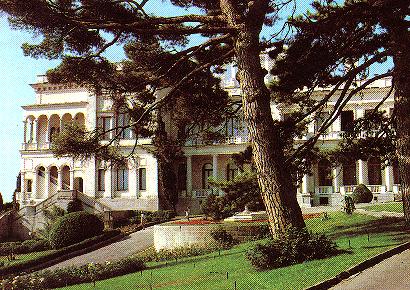
Built in 1911 as a summer residence for Nicholas II, it replaced earlier royal dwellings and used much white Crimean granite in the process. It is built in Italian Renaissance style with beautiful Florentine and Arabic courtyards.
After the revolution, the palace became the sanatorium. Today the palace houses the Historical Museum and Picture Gallery.
The palace has a lovely large gardens, a highlight of which is the "sunny path", running about a mile west from just below the palace to a lookout over resort area
"Oreanda".
Swallow's Nest.
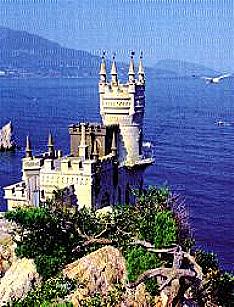 Two thousand years ago Romans sailed these waters that are visited each year by numerous tourists today. A small castle "The Swallow's Nest" on the very edge of a rocky cape Ai-Todor is a symbol of the Crimea now. It was built on the same cape where Romans built their fort. Two thousand years ago Romans sailed these waters that are visited each year by numerous tourists today. A small castle "The Swallow's Nest" on the very edge of a rocky cape Ai-Todor is a symbol of the Crimea now. It was built on the same cape where Romans built their fort.
Swallow's Nest is a fairy tale castle, the glory of a million post-cards. It is located about 10 km west of Yalta. Built in 1912 for Baron Shteingel, a German oil magnate, it's now an Italian restaurant.
You can take a nice boat ride to visit a "Swallow's nest" castle.
Bakhchisaray palace
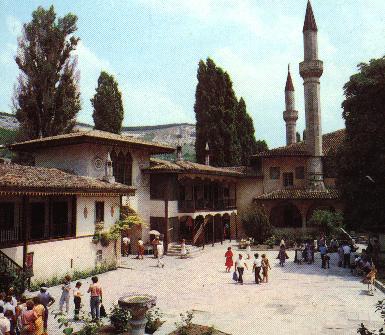 The small town of Bakhchisaray brings you face to face with the Tatar era of Crimean's past.
The small town of Bakhchisaray brings you face to face with the Tatar era of Crimean's past.
From the 15th century until 1783, Bakhchisaray was the seat of the Crimean khans, the last westward bastion of the descendants of Jenghiz Khan 's hordes. From 1475, Crimean tatars were vassals of the Ottoman Empire.
The Tatar khan's palace was built by Russian and Ukrainian slaves in the 16th century under the direction of Persian, Ottoman, and Italian master builders.
Inside the main mosque, which dated from 1740, there is a nice wooden minbar (pulpit) and carved mihrabs (prayer niches facing Mecca).
The carved wooden balcony was for women only. In the back garden behind the palace is the harem, three rooms decorated with cushioned seats and carpets, with prettily painted walls and stained glass windows.
A fascinating historical museum contains 12 rooms with a variety of exhibits covering Tatar culture and the life of khans, including textiles, furnishings, glassware, documents and old photos.
________________________________________________________________________________________________________________
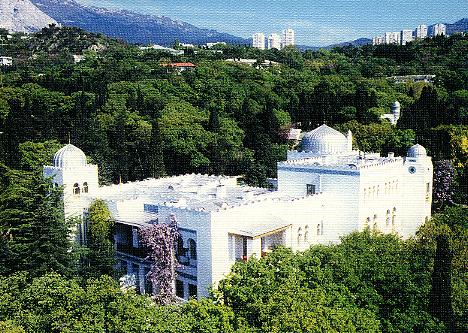 Palace "Dulber" is a masterpiece of "oriental crimean" style. Palace "Dulber" is a masterpiece of "oriental crimean" style.
The Massandra palace.
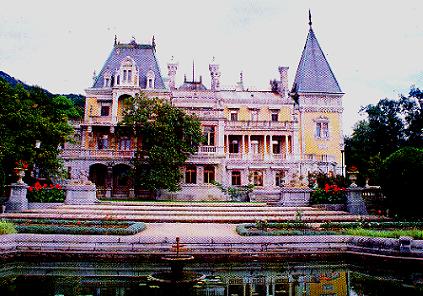 It was built for Russian Emperor Alexander the III. After October Revolution Soviet Government used this palace as a summer residence for the head of Government Iosiff Stalin and as a place of conferences for heads of governments of foreign countries. It was built for Russian Emperor Alexander the III. After October Revolution Soviet Government used this palace as a summer residence for the head of Government Iosiff Stalin and as a place of conferences for heads of governments of foreign countries.
Now the Massandra Palace is a historical and art museum, where you can see a beautiful interior, painting and woodwork. The Massandra palace is surrounded with a small, but lovely gardens. It is a masterpiece of landscape architecture.
The Nikitsky Botanical Gardens.
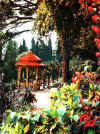 Even if you are no gardener or botanist, the Nikitsky Botanical Gardens, tumbling down three sq. km of hillside to the sea 5 km east of Yalta, are well worth a visit for their beauty and excellent views. Even if you are no gardener or botanist, the Nikitsky Botanical Gardens, tumbling down three sq. km of hillside to the sea 5 km east of Yalta, are well worth a visit for their beauty and excellent views.
The gardens, founded in 1812, hold 28,000 species and varieties, including 2000 types of rose.
Due to subtropical climate, there are many plants from Mediterranean coast, Middle Eastern countries, Japan, Northern and Southern America. Many of the trees and plants adorning the parks and gardens of Crimea originated here.
 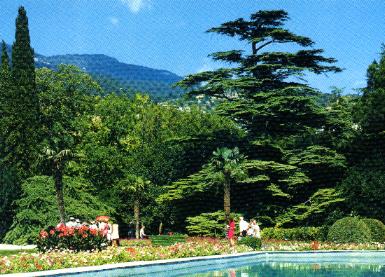
| 